Lauf’s unique leaf-spring suspension design, with no complex dampers or adjusters, debuted in mountain biking – but is it best suited to the world of gravel?
While all of its gravel fork rivals use classic telescopic suspension designs, the Lauf’s multiple leaves and their flexibility give the Grit its 30mm of suspension travel.
The benefits are low weight and high-speed chatter response, but the downside is you get no adjustment and no control over the Grit’s action.
Lauf Grit (3rd Gen) specifications and details
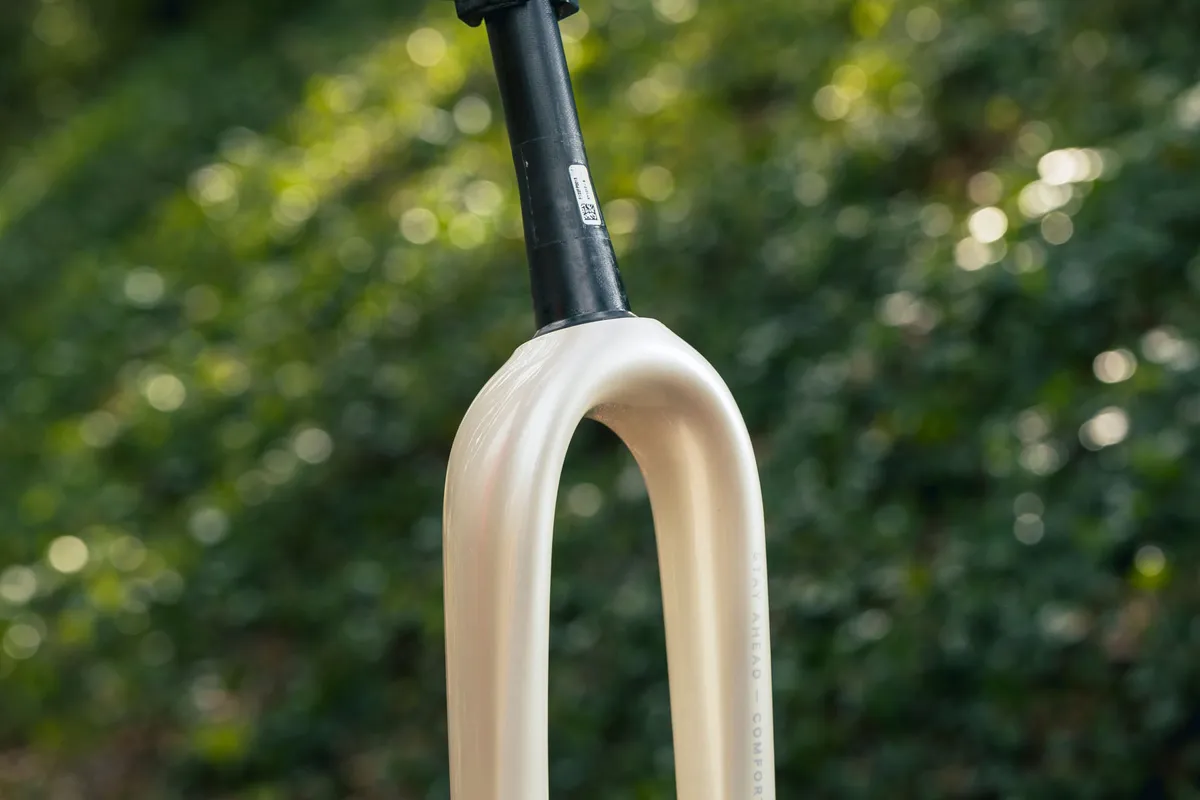
The Lauf Grit design is radically different from typical suspension forks, and while it may not have the adjustability and tuning of a telescopic fork, it has some compelling details to tempt riders.
The 12 glass fibre leaves that suspend the thru-axle assembly from the main body of the fork are designed to provide 30mm of travel.
They’re also constructed to sag when a rider is on board, bringing the already low 420mm axle-to-crown measurement down to a close-to-rigid 411mm.
In theory, this will have much less of an impact on the steering geometry of your bike and take into account the natural sag of the glass fibre springs. It should work with a wider range of frame designs than a standard telescopic suspension fork.
The downside of the non-adjustable format comes when the front of the bike is loaded with bikepacking bags – you run the risk of upsetting the balance of the fork because there’s no way of upping the spring pressure to compensate.

It’s something my fellow senior technical editor Tom Marvin grappled with when he embarked on a bikepacking holiday. In the end, he switched out the Grit for a rigid carbon fork.
The Grit can take a 700c tyre up to 57mm wide. It’s designed around using a 160mm rotor (but you can use a 180mm rotor with a spacer) and comes with a maximum rider weight, including gear, of 120kg.
The fork can accept both 12mm and 15mm thru-axles.
At 960g, the Grit is lighter than any of the telescopic gravel forks I tested it alongside. The lightest of those was the RockShox Rudy XPLR Ultimate, at 1,300g.
However, for £900 / $900, the Lauf Grit isn’t cheap, coming in at £120 more than the RockShox fork, £300 more than the KS GTC and £100 less than the Fox 32 Taper-Cast Factory.
Lauf Grit (3rd Gen) strip-down
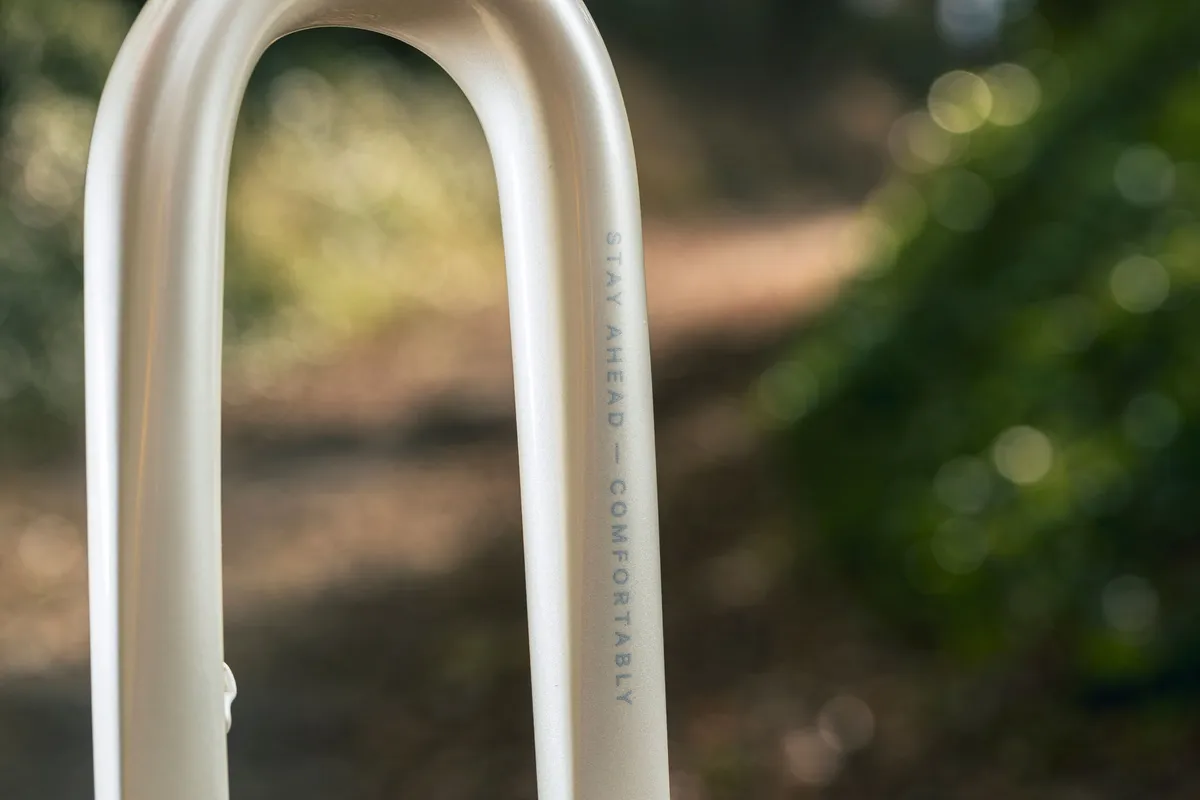
The Grit looks completely different from a telescopic fork.
The design, which has no sliding parts, means it proved easy to maintain. It does, however, mean tunability isn’t an option.
On the plus side, it’s the lightest gravel suspension fork available, weighing in at around 400g more than your average rigid carbon gravel fork.
With no serviceable (replaceable) parts, there’s not much to say regarding maintenance of the Grit, although keeping it clean, especially around the glass fibre leaf springs, should help to uphold its effectiveness.
Any scoring or cracks in these flexible parts will need to be checked out by Lauf immediately, though, but that should only ever happen in the case of a crash or accidental damage.
Lauf Grit (3rd Gen) ride impressions
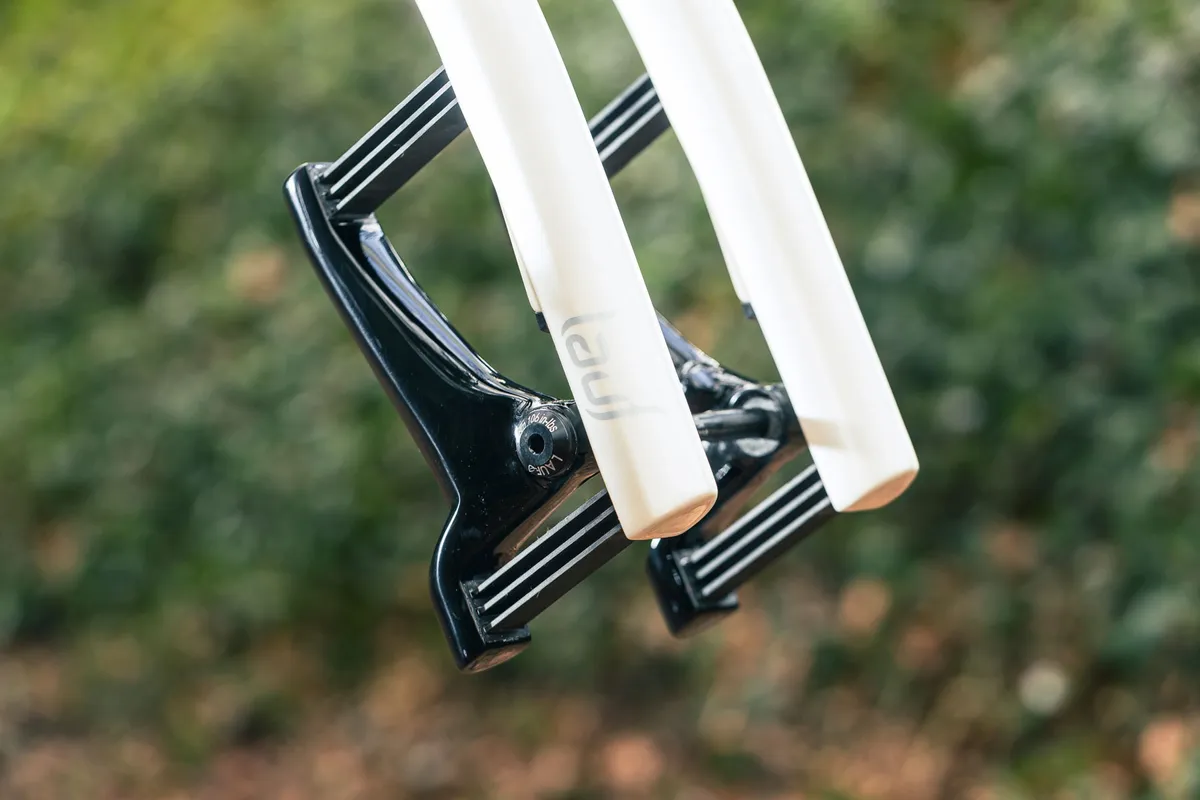
On gravel roads and scarred tarmac, the Grit smoothes the ride incredibly well.
The constant action of the 12 leaf springs working in unison is a dream for upper-body comfort and a huge absolute benefit for longer rides.
The fatiguing buzz and jarring of gravel roads is all but eliminated. It’s a similar feel to bikes such as the Specialized Future-Shock equipped Diverge STR and Roubaix, or Trek’s previous-generation double IsoSpeed-equipped Domane.
The Grit’s damping works best when you're seated in the drops or on the hoods. It does, however, suffer somewhat when you get out of the saddle to power up a climb.
With no rebound control or lockout, the Grit fork bobs quite a lot. As a taller, heavier rider, I got more of the bobbing effect than a lighter colleague, but we both experienced it on more strenuous climbs.
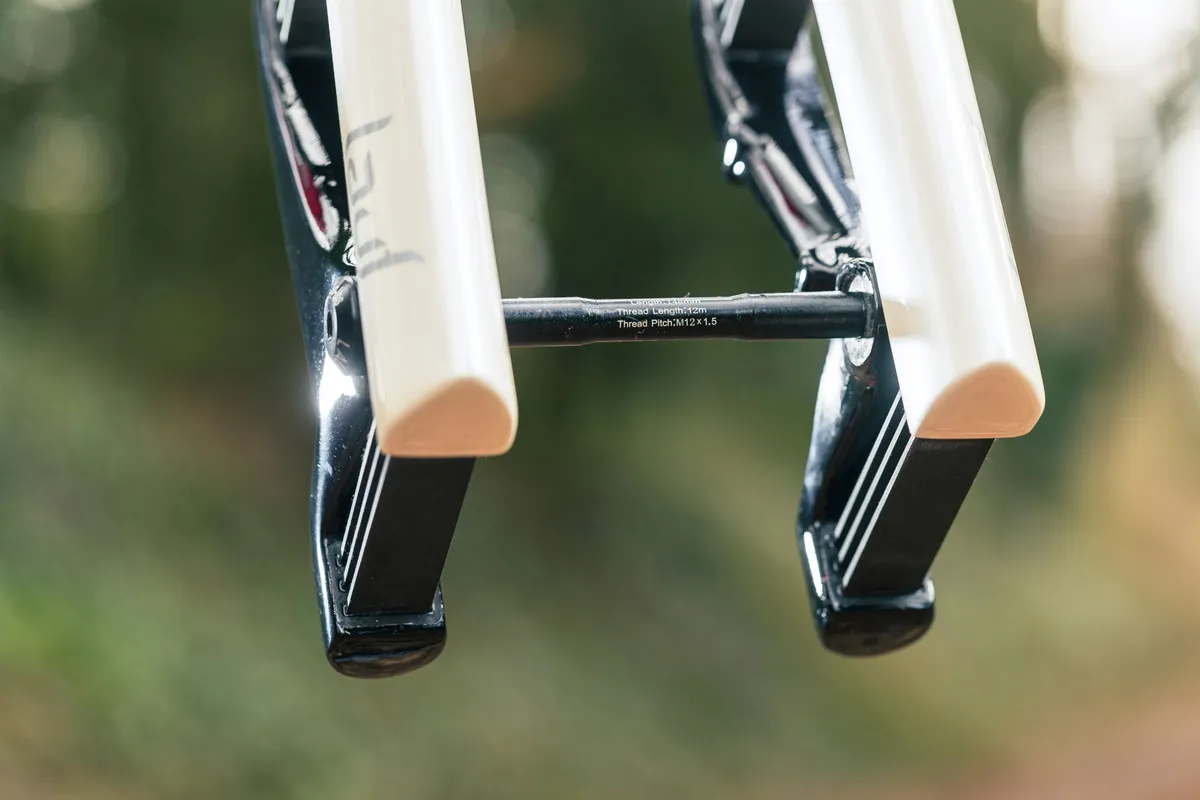
On rooty, rocky descents, the fork can feel a bit choppy because the simple compression and rebound of the leaf springs can get overwhelmed by faster-frequency, bigger hits.
Compared to the original Grit fork, which I found suffered from speed wobble on fast road descents above 30mph, this third-generation fork does a much better job of coping with higher speeds on smooth surfaces.
That said, it still ‘waves’ up and down a little. On the bike, this feels as though it's continuously dropping and rising as if you're riding against a tide.
This is especially so compared to its lockout-able rivals, and feels miles apart from the similarly out-there design of the ultra-stiff Cannondale Lefty.
Lauf Grit (3rd Gen) bottom line
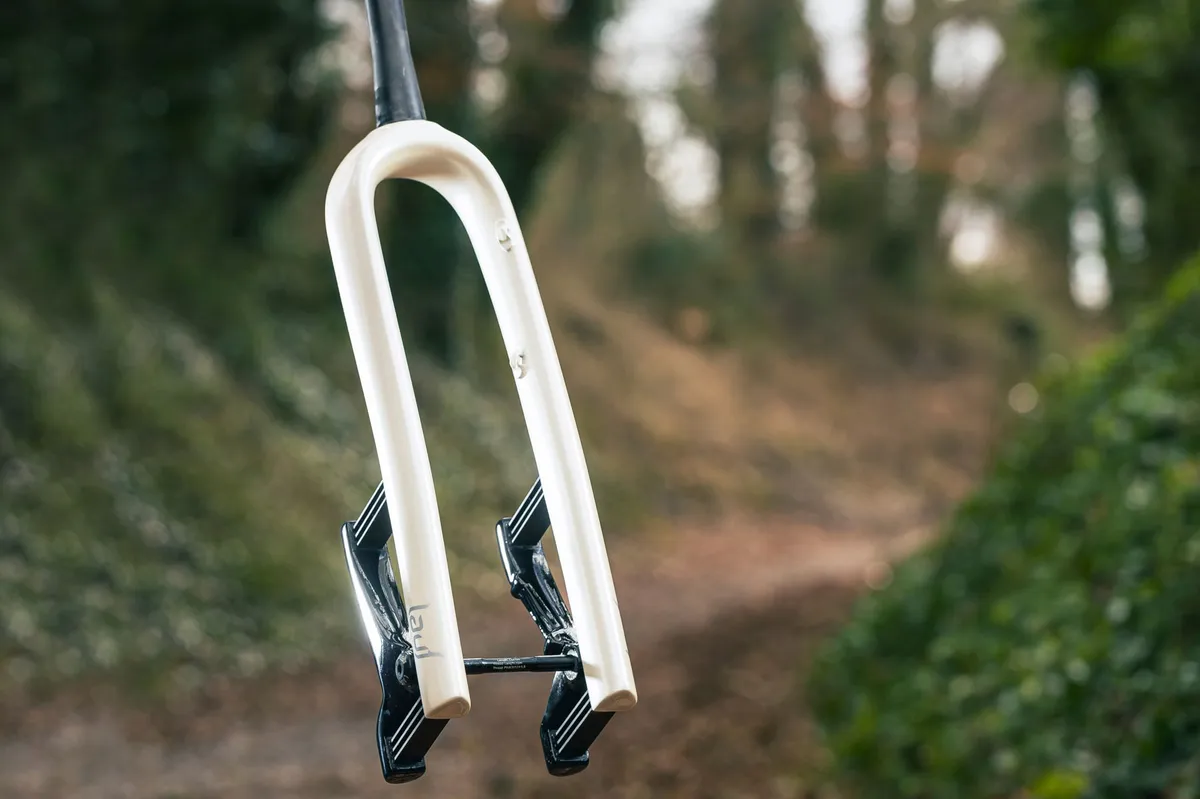
If all you want from a suspension fork for gravel riding is a unit that’ll reduce fatiguing chatter to an absolute minimum and smooth out gravel roads, ungraded surfaces and byways, the Lauf Grit (3rd Gen) is all the fork you’ll ever need.
If you’re looking for a fork for epic gravel endurance rides, the SL’s smoothing nature and low weight are major plus points.
You’ll also benefit, in theory, from reduced maintenance needs.
That said, on techy, tricky and very lumpy singletrack trails, the Grit is out of its depth compared to telescopic options.
The ‘waving’ effect I encountered might also put some off, especially if the Cannondale Lefty is a viable option.
How we tested
We tested six of the latest gravel suspension forks, putting them through their paces on varying degrees of gravel terrain.
This included covering hundreds of kilometres over everything from easy sections of ‘princess gravel’ to assess ride smoothness and fast-bump responses, through to singletrack trails and technical woodland descents to ascertain their ability to take bigger hits.
We’ve tested them over a period of nine months, covering summer, autumn and winter, to test how they hold up in all weathers.
Each fork was subjected to a strip-down by expert technician Finlay Patton, owner of Full Factory Suspension, to assess build quality and ease of servicing.
Forks on test
- KS GTC review
- RockShox Ultimate XPLR review
- Lauf Grit (3rd Gen)
- MRP Baxter
- Fox 32 Taper-Cast Factory review
- Cannondale Oliver Lefty
Product
| Brand | Lauf |
| Price | £900.00, $990.00 |
| Weight | 960g |
Features
| Wheel size | 29in_700c |
| Offset | 47.0000 |
| Offset | MILLIMETER |
| Travel | 30.0000 |
| Travel | MILLIMETER |
| Features | Axle to crown: 420mm |
